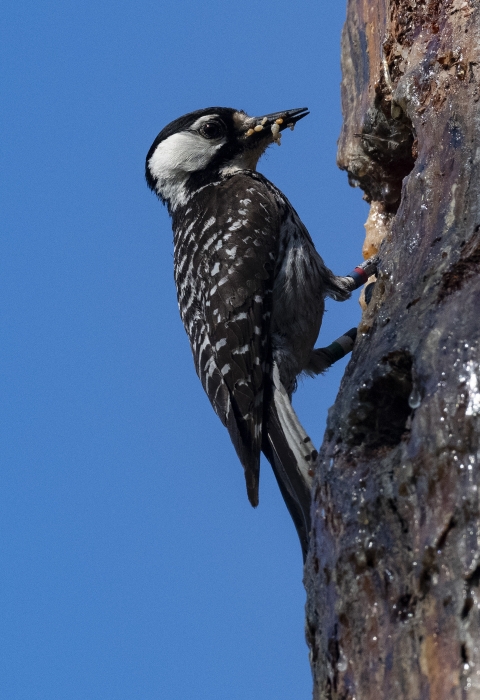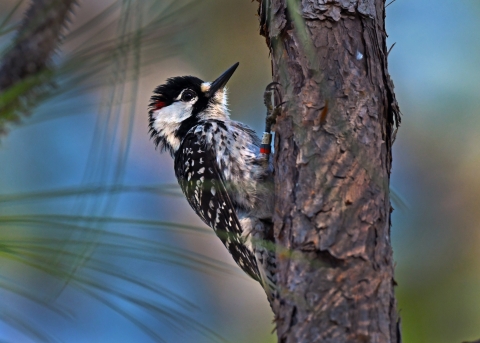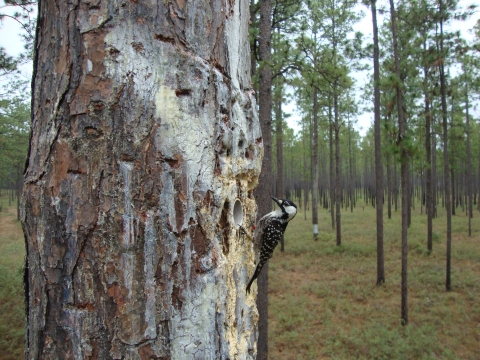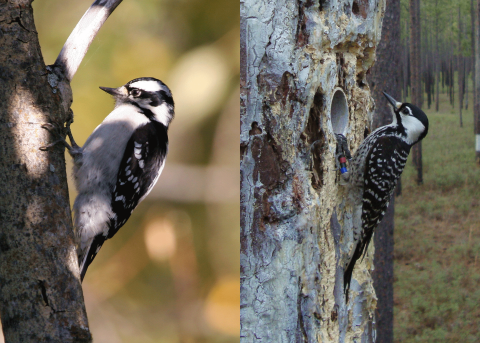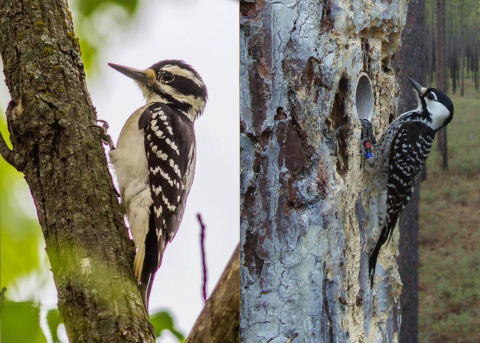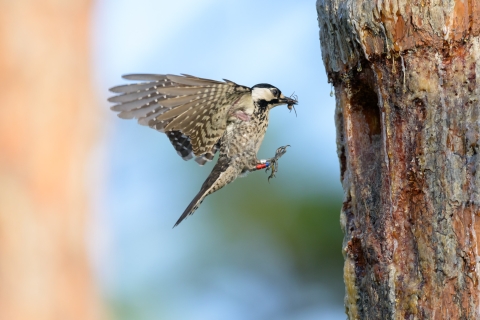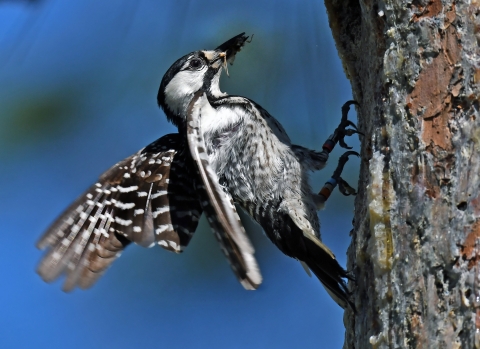Who would have guessed a natural disaster would be a major turning point in this endangered bird’s recovery?
Red-cockaded woodpeckers (RCWs) are different than other woodpeckers because they are the only woodpeckers who carve their holes in live trees and only in pines. When Hurricane Hugo came through South Carolina in 1989, it destroyed most of the longleaf pine forests that RCWs rely on for survival.
The day after Hurricane Hugo came through South Carolina, biologists walked into leveled forests with distressed RCWs everywhere they looked. Only one forest in the area was left intact: the Waterhorn District of the Francis Marion National Forest.
Conservationists quickly formed a plan to help the desperate woodpeckers. They drilled artificial cavities in the undamaged forest trees and relocated the RCWs. The rescue mission was so successful that it became standard in helping the endangered RCWs bounce back. Today, conservationists all over the Southeast successfully relocate RCWs to artificial cavities in forests where the RCW populations can grow. We have seen their numbers increase, and we have met or exceeded many of our goals to help RCW recovery in part because of this program.
Identifying Features
- About the size of a robin (roughly 7 inches long).
- Back has black and white horizontal stripes.
- The back of the neck is black with large white patches on their cheek.
- Males have a tiny red streak at the border of their cheek.
Red cockaded woodpeckers are often mistaken for downy and hairy woodpeckers. An easy way to tell the difference: downy and hairy woodpeckers have a white stripe down their backs and don’t have the large white patch on their checks.
Conservation Status
The RCW was listed as endangered under the Endangered Species Act in 1973. Their decline is closely related to the decline of our native longleaf pine forests in the Southeast U.S. The native forests once covered more than 90 million acres. Today, we have only 5.2 million acres remaining.
Where can I find RCWs?
- Alligator River NWR
- Waccamaw NWR
- Big Branch Marsh NWR
If none of these National Wildlife Refuges are near you, check out our map of refuges where you can see RCWs.
Red Cockaded Woodpecker Photo Contest
As part of our Bird of the Month series, we invite you to submit your photos of RCWs in a photo contest.
**In the file name of your photo, please include your first and last name, contact email address, and the location where the photo was taken. If these components are missing, we will have no way of contacting you if you win.**
Submissions will be judged by a panel of U.S. Fish and Wildlife Service employees. Once a winner is selected, they will be contacted via email and asked to sign a photo release form. This form protects the photographer's rights, ensures proper credits are given, and grants the U.S. Fish and Wildlife Service permission to share the photo on our social media channels. Please monitor your junk/spam folders towards the end of the month in the event that we reach out and our email lands there.
The winner will be announced publicly near the end of each month on our Southeast Regional Facebook and X (formerly known as Twitter) platforms.
A photo contest will occur each month for each featured bird species. At the end of 2024, all twelve winning photographs will be shared on our regional social media accounts.
Submit your original photos of RCWs here!
5 RCW Fast Facts
- RCWs nest in live trees because digging the cavity creates a sticky pine resin around the hole that keeps snakes away.
- RCWs make their homes in trees about 60 to 100 years old.
- It takes a family of RCWs about 1-3 years to dig out a pine tree cavity in longleaf pines.
- RCWs have complex social systems, including a mated pair, offspring, and helpers (helps with incubating eggs, making new cavities, feeding young, and defending territory).
They are monogamous and court each other for up to a year.
